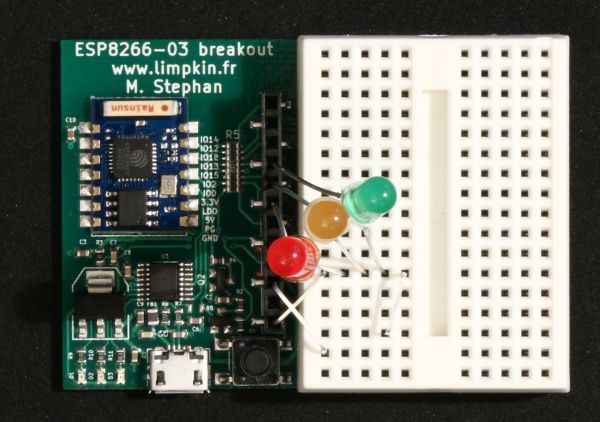These modules come in different shapes and colours and can be purchased from the internet for 3 dollars only.
They are therefore cheap enough to enable many Internet of Things applications like monitoring your home temperature and activity all year round (if you ever need to do that).
And at this price, you’re actually better off directly soldering the complete board on your existing PCB rather than integrating each of its components, as it would result in a higher board cost (for less than 10k platforms produced) and possible RF related problems.
The ESP8266 modules come with a pre-loaded firmware that will accept some commands  through their UART interface (connect to wifi, open udp socket, send data to this IP…). Moreover, since Espressif recently released their SDK you can now load your own custom programs using the existing bootloader. To launch this bootloader you just have to connect some IOs to GND in a specific order.
through their UART interface (connect to wifi, open udp socket, send data to this IP…). Moreover, since Espressif recently released their SDK you can now load your own custom programs using the existing bootloader. To launch this bootloader you just have to connect some IOs to GND in a specific order.
However, anyone wanting to develop a project involving dozens of Wifi nodes has to start from somewhere, eg make a prototype of their future platform. That is why I developed this development board, so the prototyping stage is as simple as possible.
As you can see in the picture below the dev board breaks out all the ESP8266-03 IOs, includes a 3.3V LDO, a USB to UART converter, some logic and a button to automatically start the bootloader.
With the included breadboard solder free prototyping is therefore made possible!
You’ll notice that there aren’t any through hole components, so you may put double sided tape on the board’s back if you need to stick it somewhere. Have a look at the extremely simple schematics:
For more detail: A development board for the ESP8266-03

